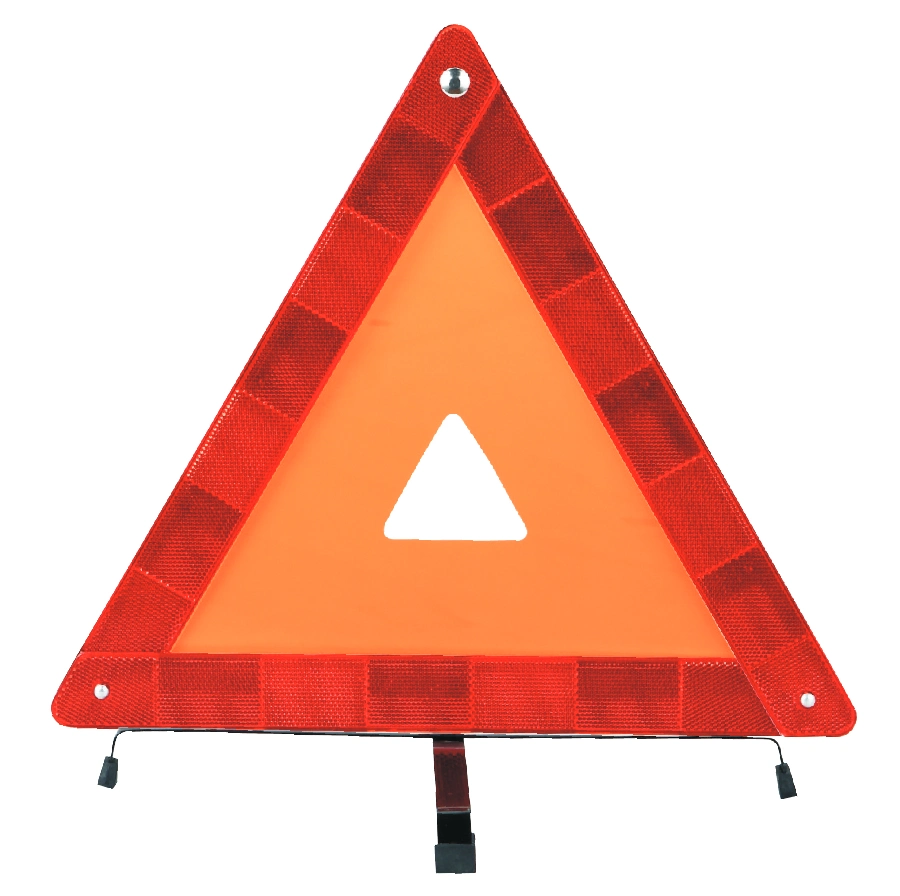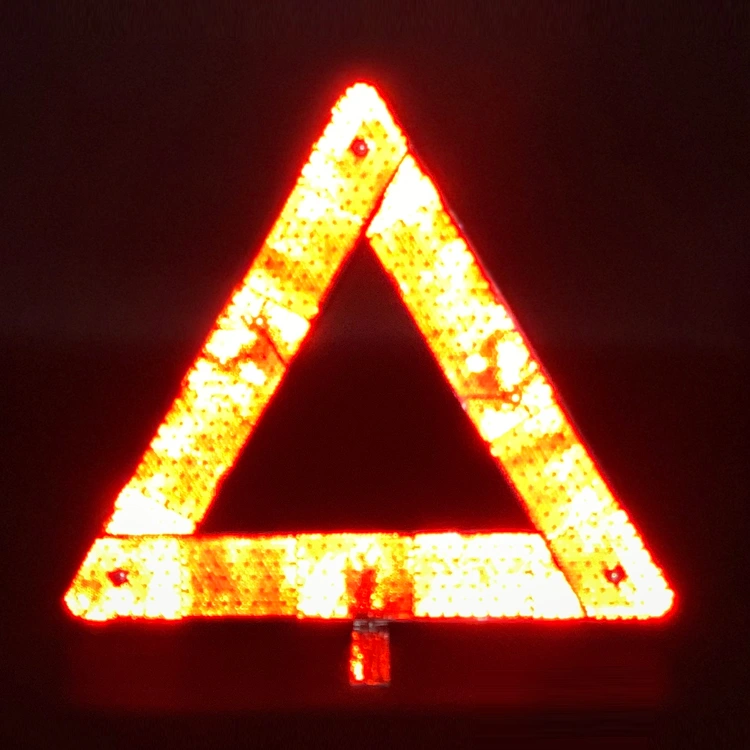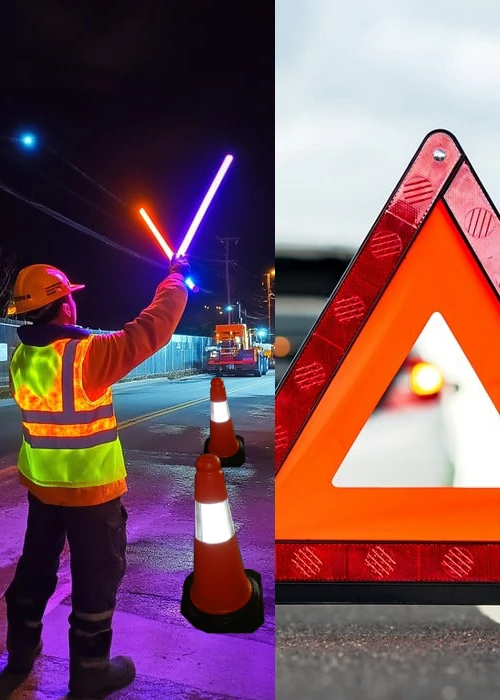Top 3 Warning Triangle Placement Mistakes That Could Put You at Risk
Whether it’s a car crash, a breakdown, or a flat tire, stopping on a highway or shoulder can be extremely dangerous, especially at high speeds or in low visibility. The more visible your vehicle is to approaching drivers, the safer you will be. That is where reflective warning triangles come into play, or as they’re also called hazard triangles or emergency triangles. Lightweight, foldable, and easy to store, this safety tool is designed to alert oncoming drivers and give them time to slow down.
Nevertheless, misplacing a warning triangle or using a damaged one not only reduces their effectiveness, but also may lead to severe secondary accidents, costly fines, or even legal liability. And for commercial drivers, employers and fleet operators may also be held responsible for resulting crashes caused by improper warning triangle use.
In this post, you will learn the 3 most common mistakes drivers make when placing reflective triangles, and how to avoid them before it’s too late.

Mistake 1: Placing Your Warning Triangle at the Wrong Distance
Reflective triangle placement distances vary depending on the type of road and vehicle. If placed too close, trailing drivers won’t have enough reaction time (especially at highway speeds); if placed too far (e.g., 150 m on urban roads), it can cause traffic congestion or even rear-end collisions.
For Passenger Cars:
According to the ECE Regulation (Europe) and DOT Standards (USA):
• Highways: Place triangle ≥150 m (about 500 feet) behind the vehicle
• Ordinary Roads: ≥50 m (160 feet) behind
• In the U.S.: typical guidance ranges between 30-90 m (100–300 feet) depending on the state
For Trucks:
Longer vehicles require at least 3 warning triangles, positioned as follows (within 10 minutes of stopping):
➤ On Divided Highways or One-Way Roads:
• 1 triangle 3 m (10 feet) behind the vehicle (side of oncoming traffic)
• 1 triangle 30 m (100 feet) behind the vehicle, centered
• 1 triangle 60 m (200 feet ) further back, also centered
➤ On Two Lane Roads:
• 1 triangle 3 m (10 feet) in front of the vehicle (side of oncoming traffic)
• 1 triangle 3 m (10 feet) behind the vehicle (side of oncoming traffic)
• 1 triangle 30 m (100 feet ) behind the vehicle, centered
➤ On Hills, Curves, or Obstructed Views:
• 1 triangle 30 m (100 feet) ahead of the vehicle (to warn vehicles approaching from the front)
• 1 triangle 3 m (10 feet) behind, side of oncoming traffic
• 1 triangle 30-150 m (100 to 500 feet) behind, depending on visibility
Failing to follow these distances is not just dangerous—it’s a violation of many national traffic laws.
Mistake 2: Using a Damaged or Folded Triangle
The second common mistake is using a damaged or improperly unfolded triangle. If the triangle isn’t fully extended or if its reflective surface is worn out or peeling, its visibility—especially at night—can drop dramatically. In such cases, it becomes almost useless in protecting you from approaching traffic.
To prevent this, drivers should routinely inspect their warning triangles, ideally once a month, checking both the folding joints and the condition of the reflective material. For additional stability, particularly in windy conditions or when parked near fast-moving vehicles, triangles with metal bases are highly recommended.
Mistake 3: Forgetting to Turn on Hazard Lights
The third mistake is forgetting to turn on your hazard lights. Many drivers assume that setting up the safety triangle alone is enough to protect them from danger. But in poor visibility conditions like fog, rain, or nighttime driving, the triangle alone may not be seen until it’s too late. The best practice is always to turn on your hazard lights as soon as the vehicle comes to a stop. When combined with properly placed triangles, this dual-signal approach significantly increases your visibility. In extreme conditions, adding LED beacons or V16 emergency lights can provide an even more powerful visual warning to other drivers on the road.
Bonus Tip: Choose the Right Warning Triangle for Your Vehicle
Whether you drive a sedan, SUV, or commercial truck, choosing a regulation-compliant triangle is key. Look for features such as:
- Durable GPPS + HIPS materials
- Metal base for stability
- High-reflectivity for night and fog conditions
- Compact storage box for trunk or cabin

Choose BestWay!
At BestWay, we offer a range of high-visibility, regulation-compliant warning triangles for both cars and trucks. Crafted from GPPS+HIPS materials with a metal base, our products are durable, foldable, and field-tested for extreme conditions, helping you stay prepared and safe. Note: we can also offer customized service based on your specific requirements!
Shop now or contact us for bulk pricing and customization options!
FAQs: Reflective Triangle for Car Emergencies
Q: Are there differences between reflective triangles for cars and for trucks?
Yes. While the material and design may be similar, commercial vehicle triangles often need to meet higher durability standards and are typically larger in size to ensure visibility from a greater distance.
Q: Can reflective triangles be used for motorcycles or bicycles?
Yes, compact or mini warning triangles can be used for motorcycles and electric bikes during roadside emergencies. However, placement may need to be closer due to reduced storage capacity and road width.
Q: Do reflective triangles work in daylight or only at night?
Reflective triangles are visible in daylight, but most effective during dusk, night, rain, or fog. Some models include fluorescent orange surfaces that are visible in daylight, even without direct light beams.


